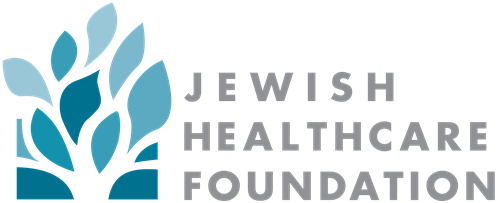Administrative Services
Page Navigation
- Administrative Services
- Evaluation, Grants & Data
- Finance & Business Operations
- Human Resources
- Marketing & Strategic Communication
- Project SEEKS SES
- Technology Services
- Safety & Security: Services & Support
- Special Education Administrative Support
- Diversity, Equity & Inclusion
- BridgeUP
The Jewish Healthcare Foundation joins Project SEEKS SES as a community partner
Posted by Jeremy Tepper on 8/3/2023

Since 2016, the Jewish Healthcare Foundation (JHF) has been focused on adolescent behavioral health as a priority public health focus area.
The Foundation started with a focus on health care quality improvement, and over time, the focus shifted to strengthening the community safety net for teens and involving youth voice in advocacy towards system change to help address the challenges in getting access to mental health services.
“We quickly realized how under-resourced the system was and shifted to advocacy and involving youth voice in advocacy,” said Deborah Murdoch, a Senior Program Manager for the JHF.
That realization sparked the inception of the Teen Mental Health Collaborative in 2020, an offshoot of the JHF that “facilitates opportunities for youth-serving organizations to share their approaches to providing emotional support, connection, and engagement for teens and to learn from one another,” according to the JHF.
The JHF and Teen Mental Health Collaborative have joined as community partners with Project SEEKS SES, recognizing their shared goals and focus in advancing mental health services and building capacity.
“The interest is in finding shared advocacy opportunities and capacity building and training in the mental health field,” said Murdoch.
“The group is really interested in strengthening out of school time, school-based partnerships. We’re really excited about the focus on mental health and the opportunity for collaboration.”
When Murdoch and Carol Frazer, a Behavioral Health Specialist for the JHF, speak about the work of the Collaborative, they often talk about the value of community-based organizations. They’ve made it a goal to strengthen those organizations and their relationships with schools, and hope to further that in partnership with SEEKS.
“I’ve always seen the community-based organizations as being vital to what’s happening in behavioral health treatment settings because those treatment settings are really so limited in the time they spend with teens and families,” Frazier said.
“So the community based organizations all have a real role to play in supporting teen and family mental health. I think they really go unrecognized as part of the whole continuum of care and treatment.”
Murdoch said the Collaborative has cited the trusted relationships that these organizations have with youth and families and their creative after school programs as some of their strengths. The Collaborative, and the participating organizations, make it a focus to value youth-voice and advocacy, giving them a legitimate seat at the table to advance change.
“We have been committed towards putting teens in the forefront and we’ve been so impressed by their thoughtfulness. They’re the ones truly leading the way,” Murdoch said.
“I think there’s endless possibilities when you put youth in the center of the planning, and they’re not just tokens at the table.”
With that in mind, the Collaborative has breaking down silos between community organizations and schools as a chief goal. Frazer noted that pathways of communication between these two entities can sometimes be dicey and have no formality or sustainability.
Bridging those sorts of gaps, though, is nothing new for the Collaborative. When they first formed, Frazer said they had to serve as a connector between community organizations, as many of them didn’t know each other. With the help of SEEKS — a wide-ranging initiative that has brought together ten school districts, three higher education institutions and countless community partners — the JHF is optimistic that they can help form even more connections.
“A lot of systems are working in silos in trying to meet the needs the best they can, and they kind of know their language and what’s available to them,” Murdoch said.
“A project like SEEKS could help foster a space for these groups to come together and say, ‘this is what’s happening and this is what’s available in the community to schools.’ I think that’s a really powerful starting place for this work.”


You are commenting as Anonymous